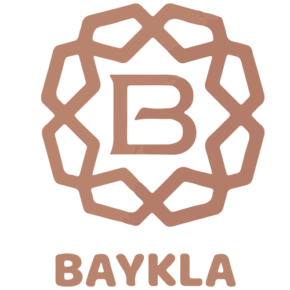The Eco-Friendly Choice: Sustainable Materials in Moroccan Pouf Making
How Sustainable Materials Enhance the Durability of Moroccan Poufs
Moroccan poufs have long been renowned for their vibrant colors, intricate patterns, and versatile functionality. But what truly sets them apart is the use of sustainable materials, which not only enhances their aesthetic appeal but also greatly enhances their durability.
One of the key sustainable materials used in the production of Moroccan poufs is genuine leather sourced from ethically raised animals. Unlike synthetic materials, genuine leather has a natural strength and resilience that ensures the poufs can withstand years of use without showing signs of wear and tear. Additionally, the use of genuine leather adds a touch of sophistication and elegance to the poufs, making them not only durable but also timeless in their appeal.
Another sustainable material that enhances the durability of Moroccan poufs is organic cotton. This eco-friendly fabric is not only soft and comfortable to sit on, but it also has the added advantage of being exceptionally durable. Organic cotton is cultivated without the use of harmful chemicals, making it highly resistant to fading, pilling, and tearing. This ensures that Moroccan poufs made using organic cotton will retain their original beauty and functionality for years to come.
By incorporating sustainable materials such as genuine leather and organic cotton, Moroccan poufs are not only made to last but contribute positively to the environment. With these materials, artisans are able to create poufs that are not only durable and aesthetically pleasing but also adhere to eco-friendly practices. As more attention is being given to sustainable living, the use of these materials ensures that Moroccan poufs will continue to be cherished and enjoyed for generations to come.
Supporting Local Artisans through Sustainable Pouf Production
Moroccan poufs have long been a symbol of craftsmanship and artistry, a reflection of the rich cultural heritage of Morocco. However, in recent years, the industry has faced numerous challenges, including the rise of mass-produced alternatives and the decline in skilled artisans. In order to preserve this traditional craft and support local artisans, a shift towards sustainable pouf production has emerged.
Sustainable pouf production not only benefits the environment but also ensures the continued livelihood of local artisans. By utilizing eco-friendly materials, such as organic cotton and natural dyes, these artisans are able to create products that are not only beautiful but also have a minimal impact on the planet. Additionally, sustainable practices promote fair trade principles, ensuring that artisans are paid a fair wage for their work. This, in turn, helps to uplift local economies and communities, enabling artisans to continue their craft and pass down their skills to future generations.
By supporting local artisans through sustainable pouf production, we are not only investing in high-quality, long-lasting products but also in the preservation of cultural heritage. With each pouf purchased, we are helping to create a sustainable future for these artisans and the communities they belong to. It is an opportunity to make a positive impact, both socially and environmentally, while also bringing a piece of Moroccan culture into our homes.
The Future of Moroccan Pouf Making: Advancements in Sustainability
Advancements in sustainability are paving the way for a brighter future in Moroccan pouf making. As consumers become more conscious about the environmental impact of their purchases, artisans are turning to sustainable materials and production methods to meet these demands. One of the key ways that sustainability is being incorporated into the pouf making process is through the use of eco-friendly materials. Natural fibers, such as organic cotton, hemp, and jute, are replacing synthetic fabrics and leather in the creation of these traditional Moroccan ottomans. Not only are these materials renewable and biodegradable, but they also require less energy and water consumption during manufacturing.
In addition to the materials used, advancements in sustainability are also focusing on the production process itself. Many artisans are embracing eco-friendly dyes and natural dyeing techniques to minimize the use of harmful chemicals. By utilizing plant-based dyes sourced from local plants, these pouf makers are not only reducing the environmental impact but also adding a unique touch to each pouf. Moreover, innovations in waste management and recycling are being implemented to ensure that any leftover materials or byproducts are properly disposed of or repurposed, further reducing the ecological footprint of the industry. As the demand for sustainable products continues to grow, the future of Moroccan pouf making lies in these advancements, ensuring that both the environment and the local artisans are supported in a responsible and ethical way.
What are Moroccan poufs made of?
Moroccan poufs are traditionally made of natural materials such as leather, cotton, and wool.
How do sustainable materials enhance the durability of Moroccan poufs?
Sustainable materials, such as eco-friendly leather substitutes and organic cotton, are designed to be more resistant to wear and tear. This enhances the durability of Moroccan poufs, ensuring they last longer and reduce the need for frequent replacements.
How does sustainable pouf production support local artisans?
Sustainable pouf production often involves working closely with local artisans and cooperatives, providing them with fair wages and stable employment. By supporting sustainable production, consumers contribute to the economic well-being of these artisans and help preserve their traditional craft.
What advancements in sustainability can we expect in the future of Moroccan pouf making?
The future of Moroccan pouf making holds promise for advancements in sustainable practices, such as the use of recycled and upcycled materials, eco-friendly dyes, and innovative manufacturing techniques that minimize waste and energy consumption. These advancements aim to reduce the environmental impact while maintaining the beauty and quality of Moroccan poufs.
